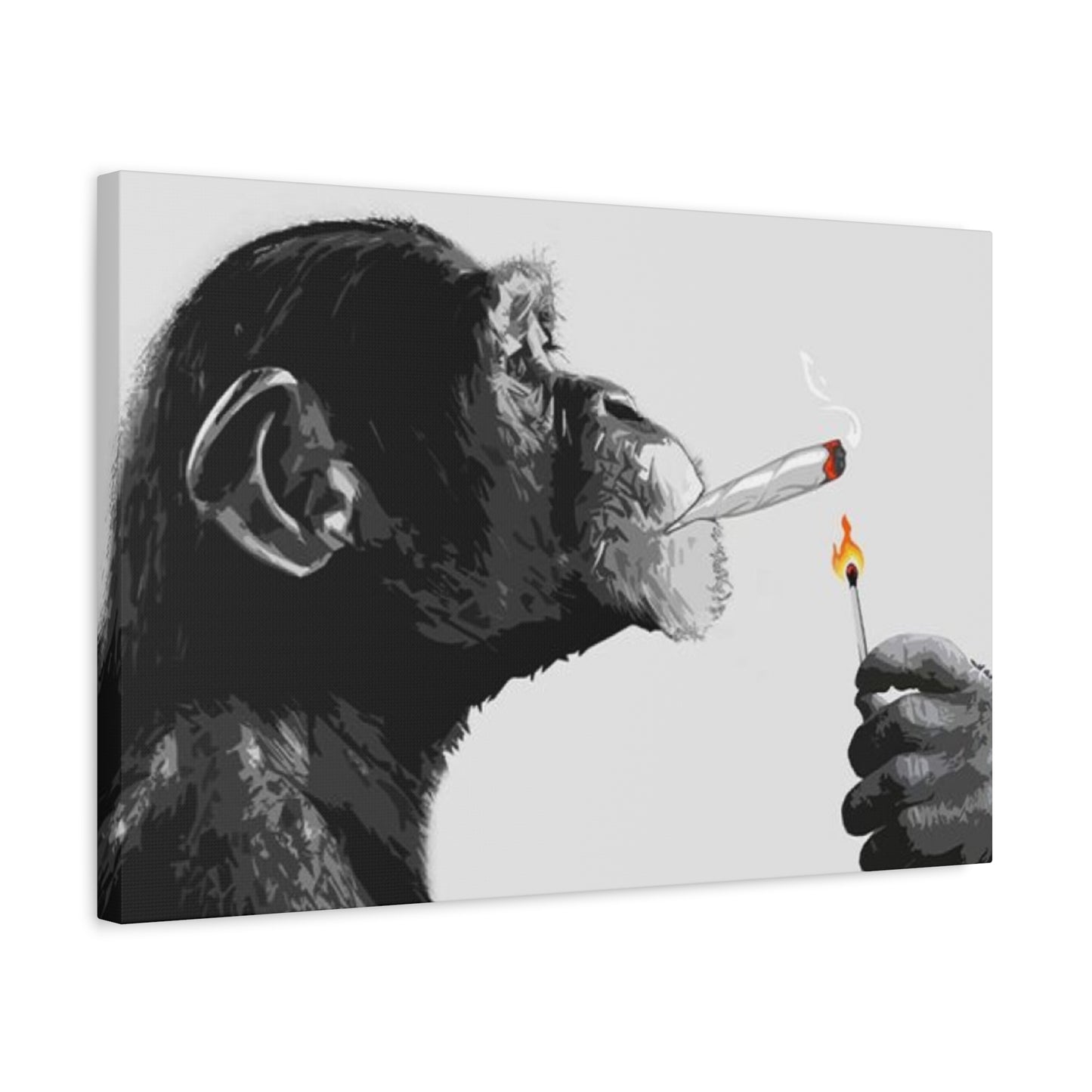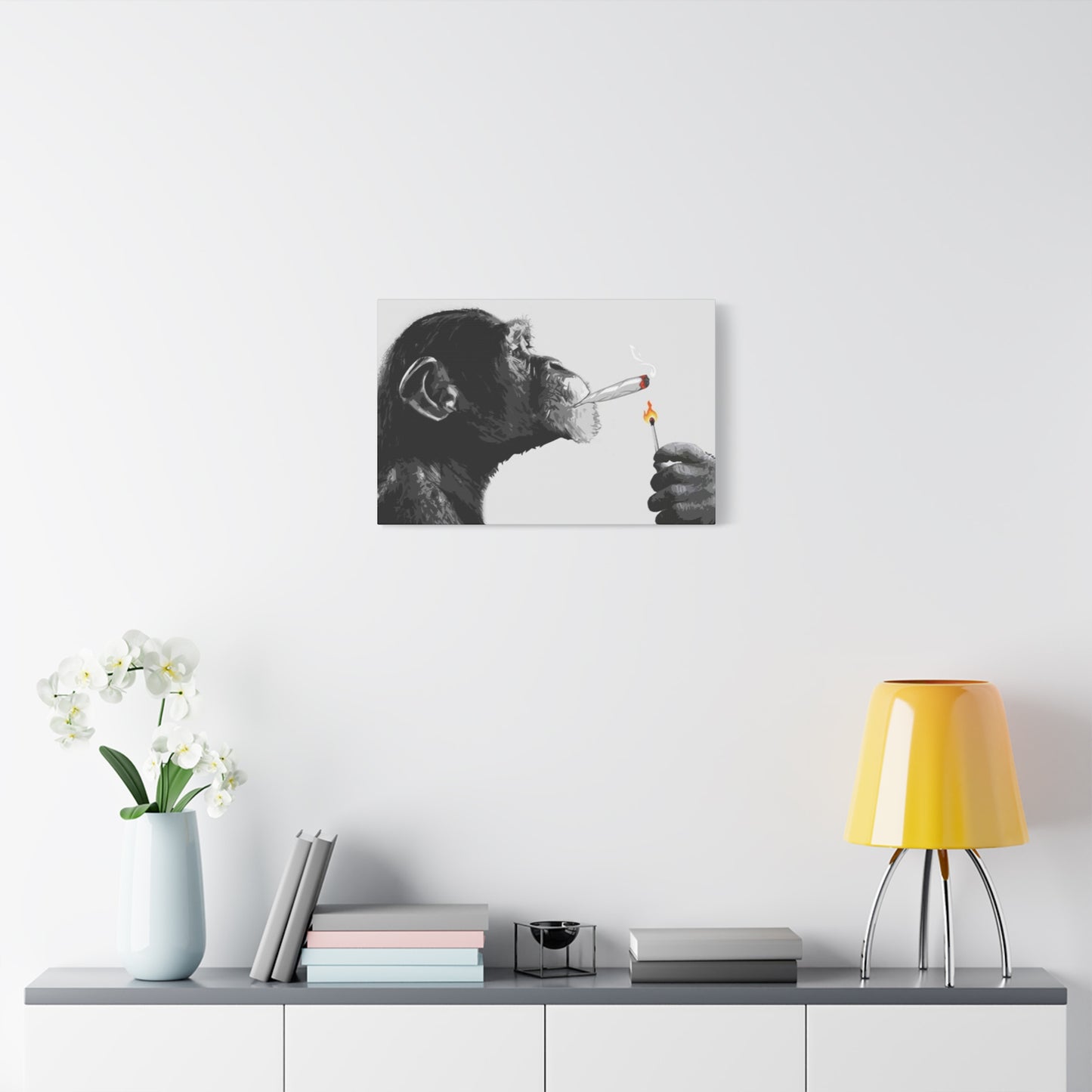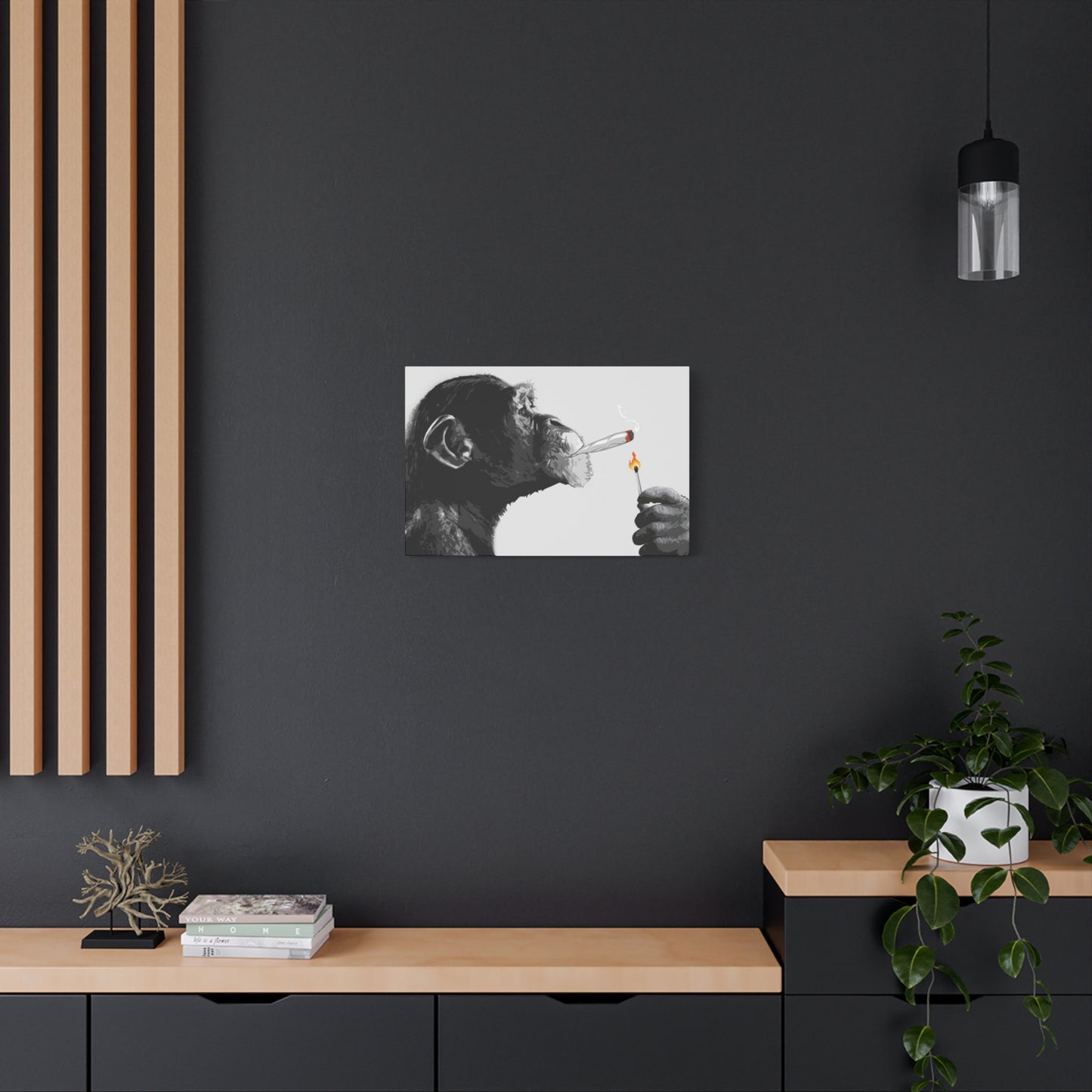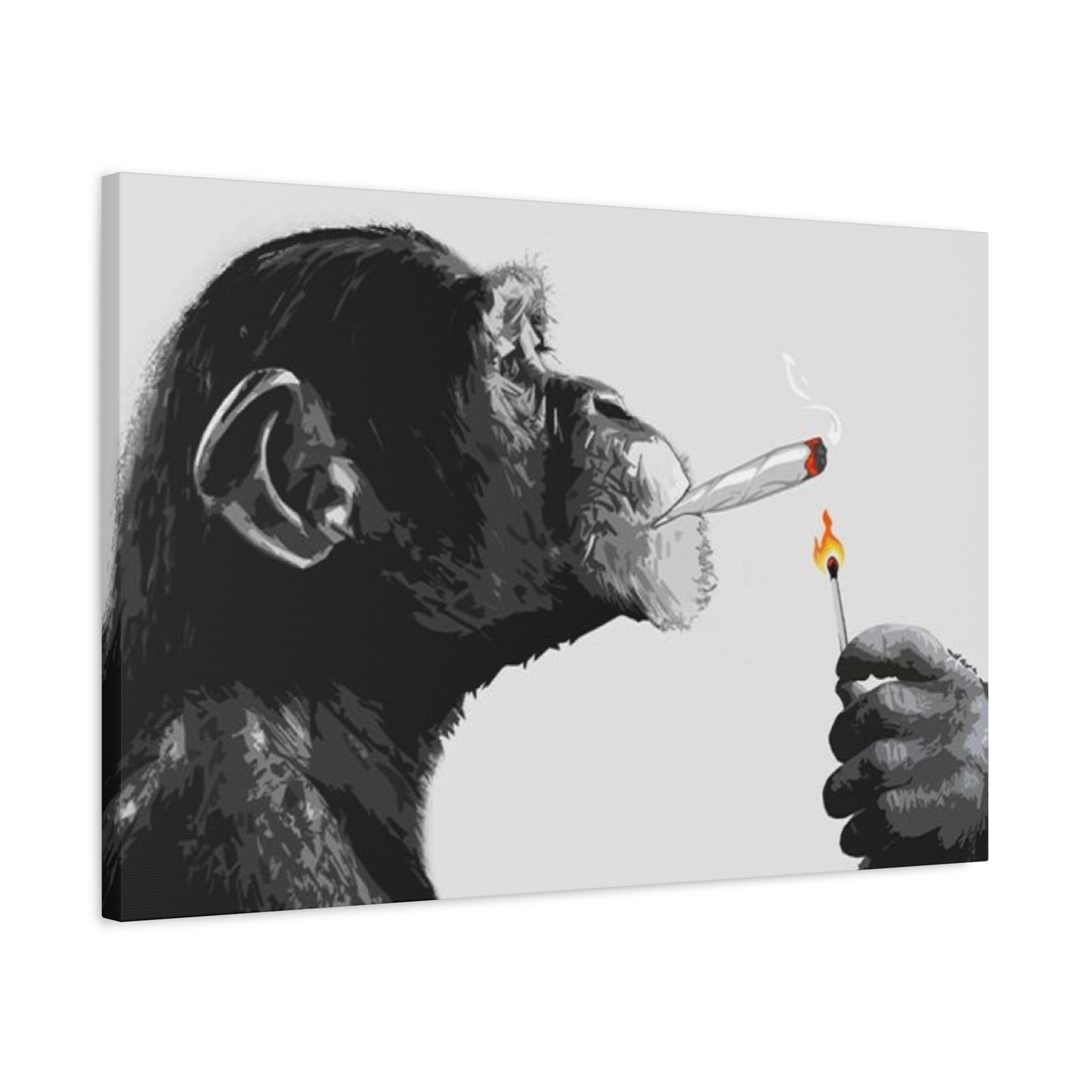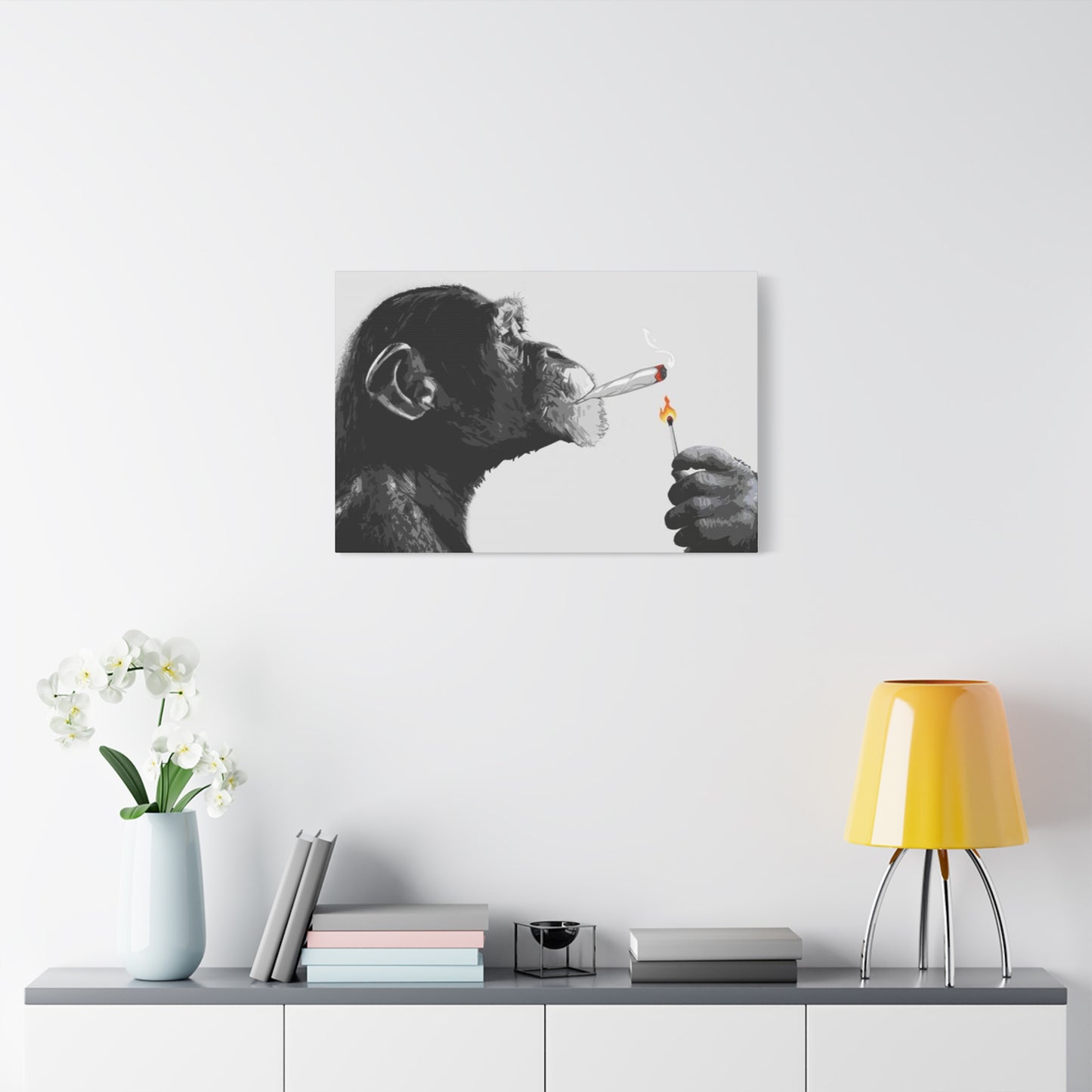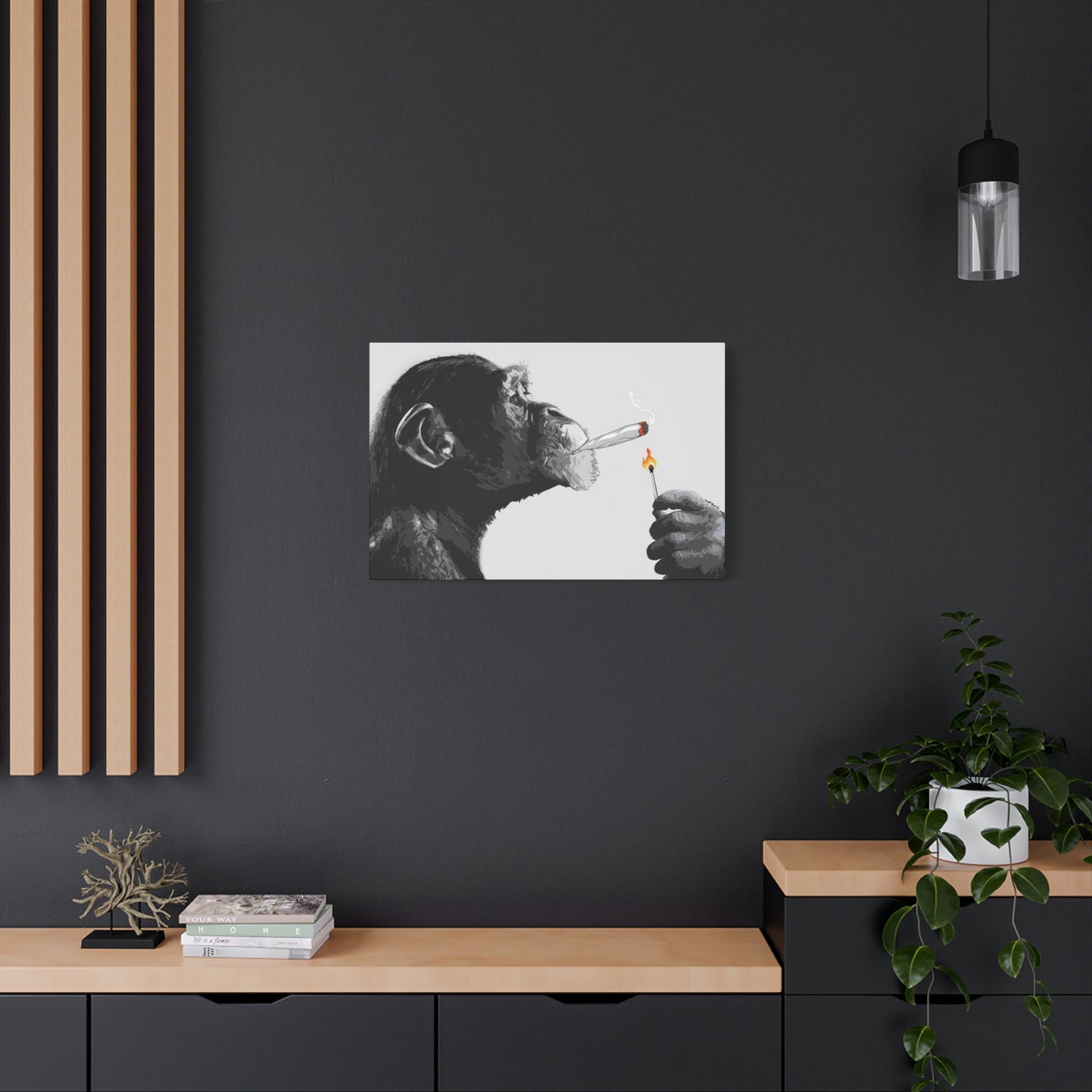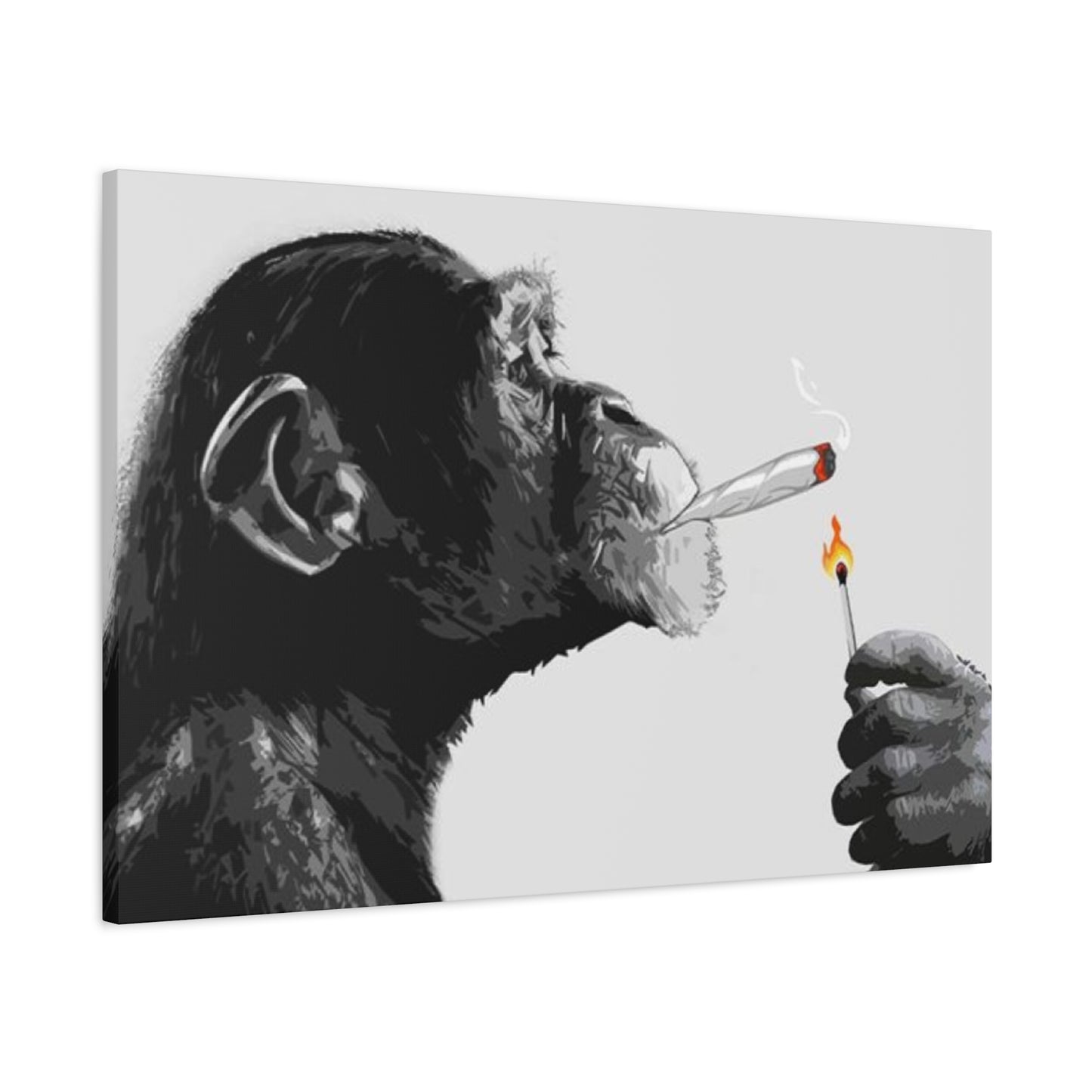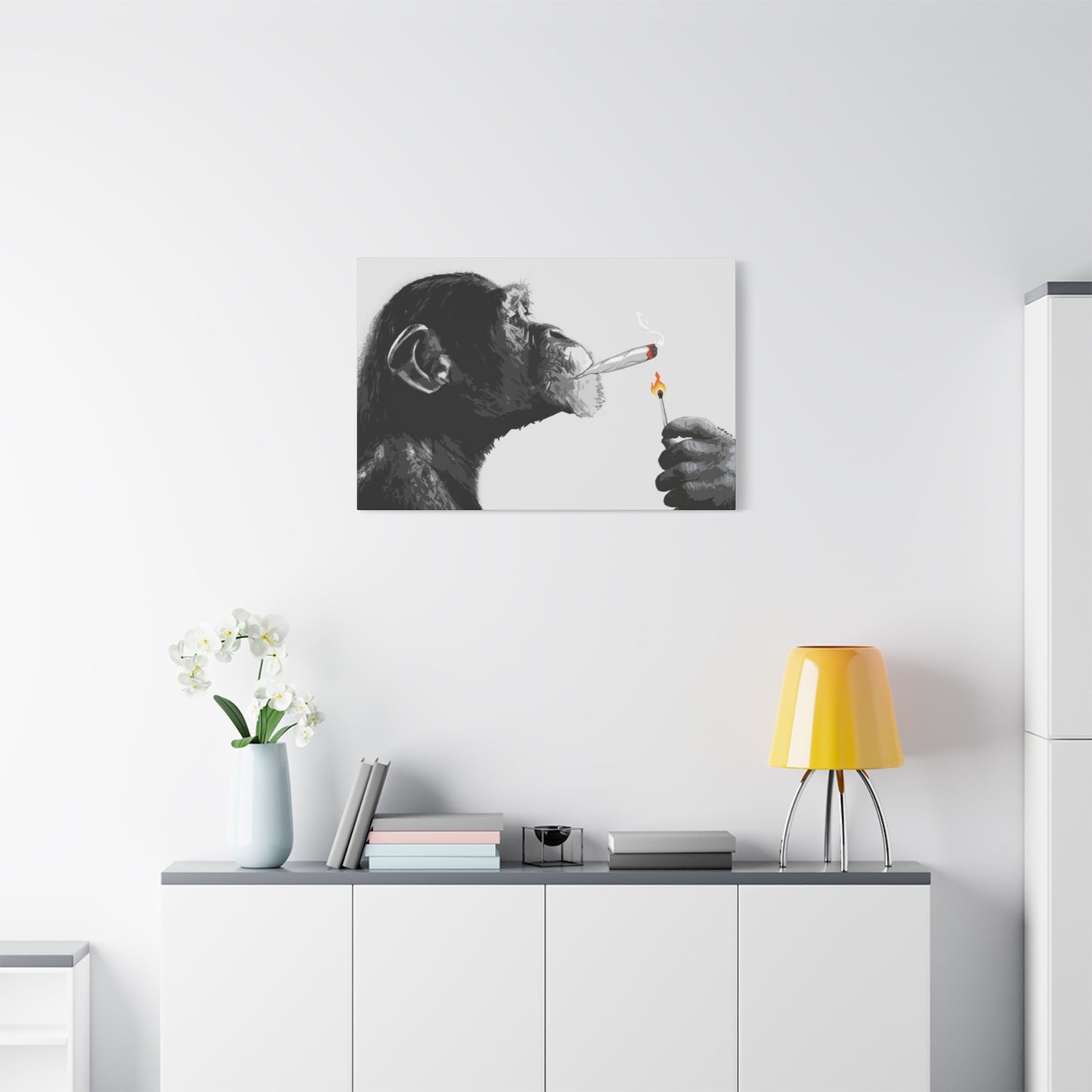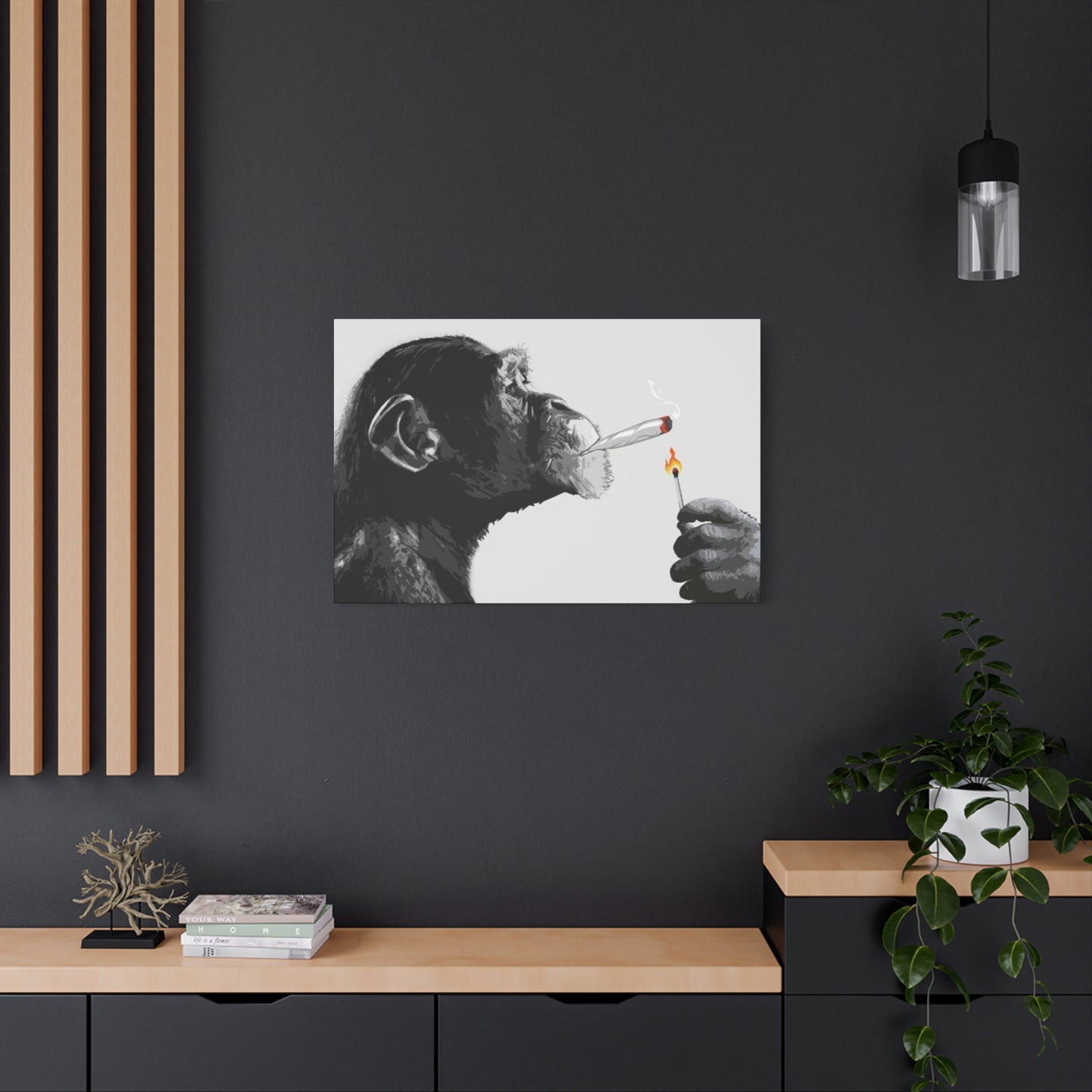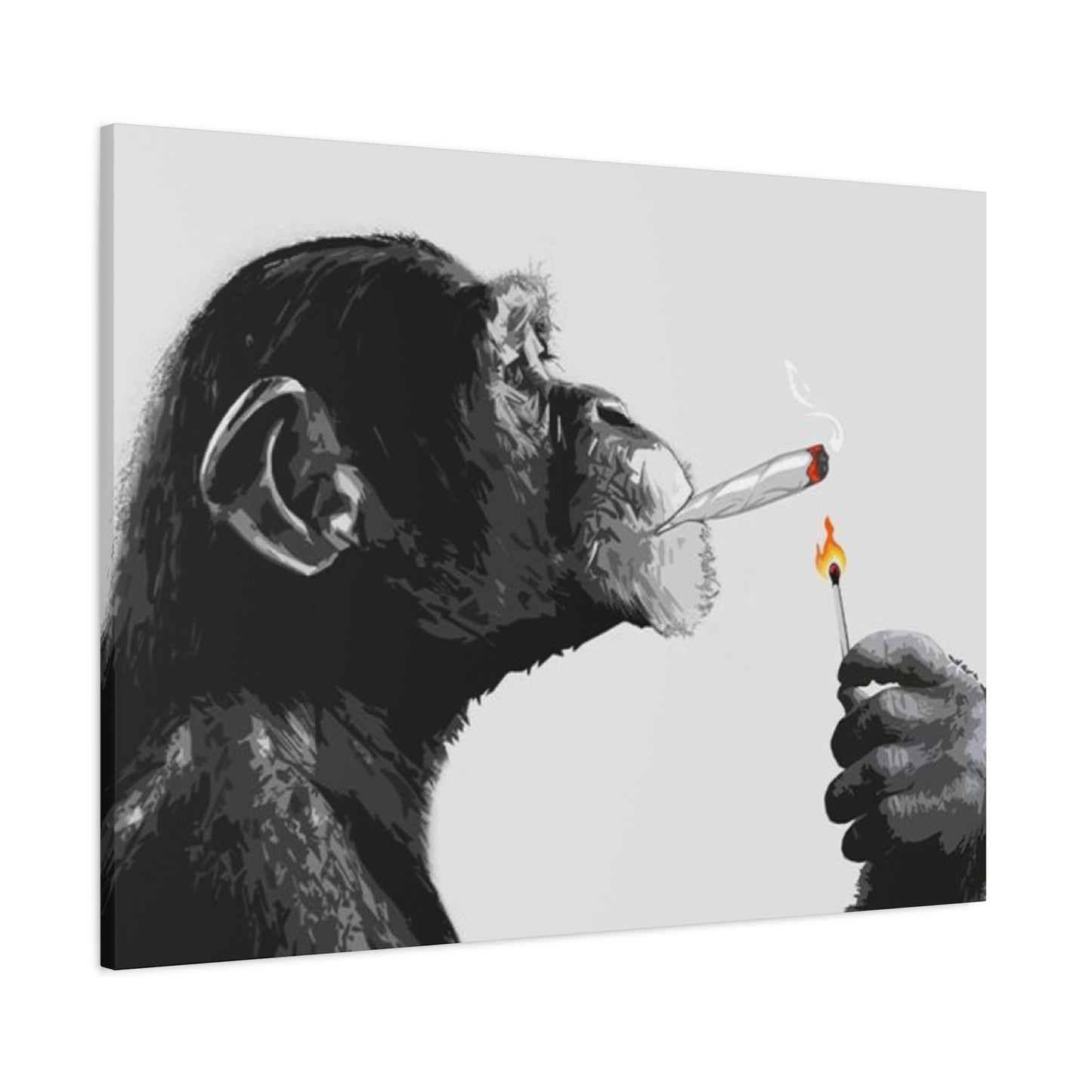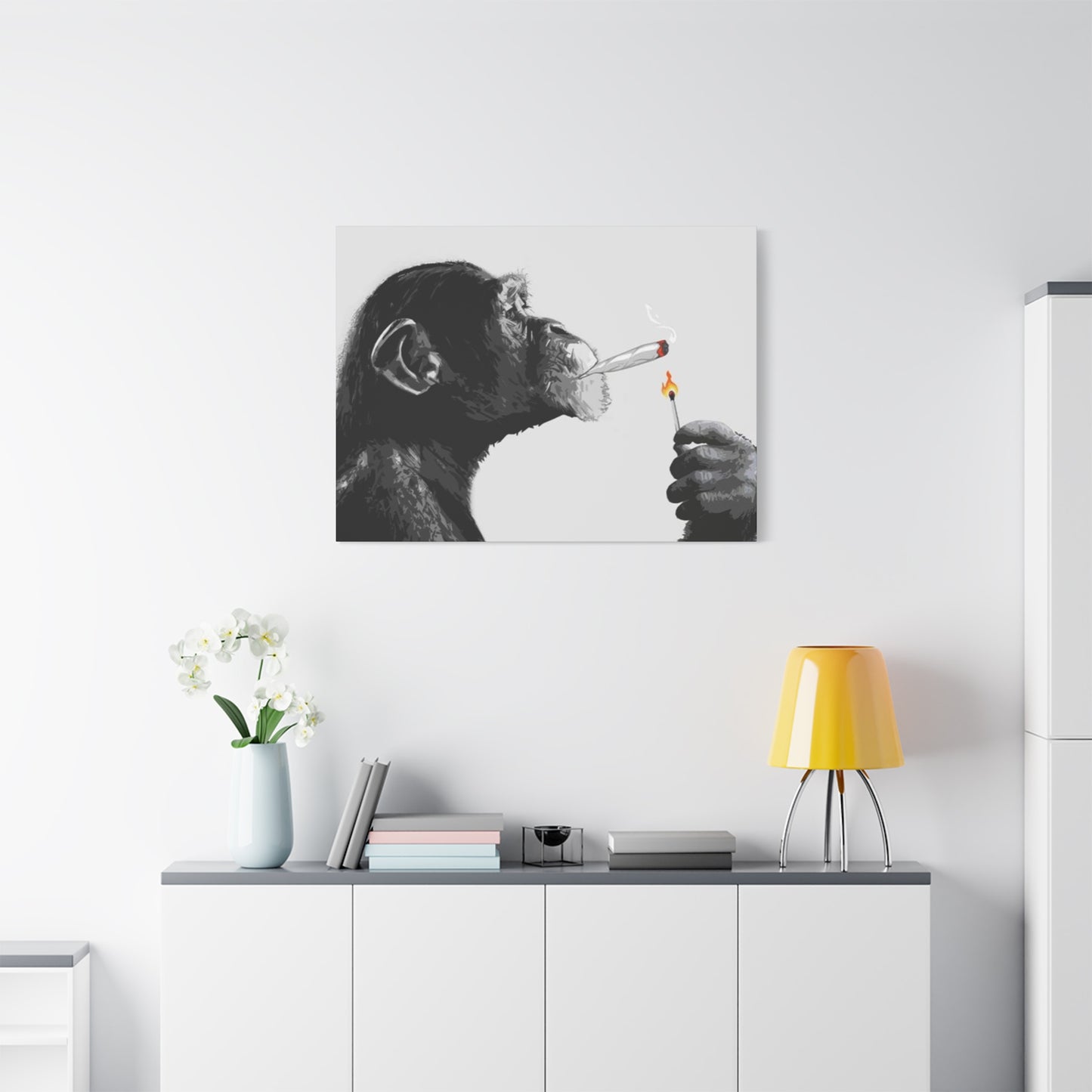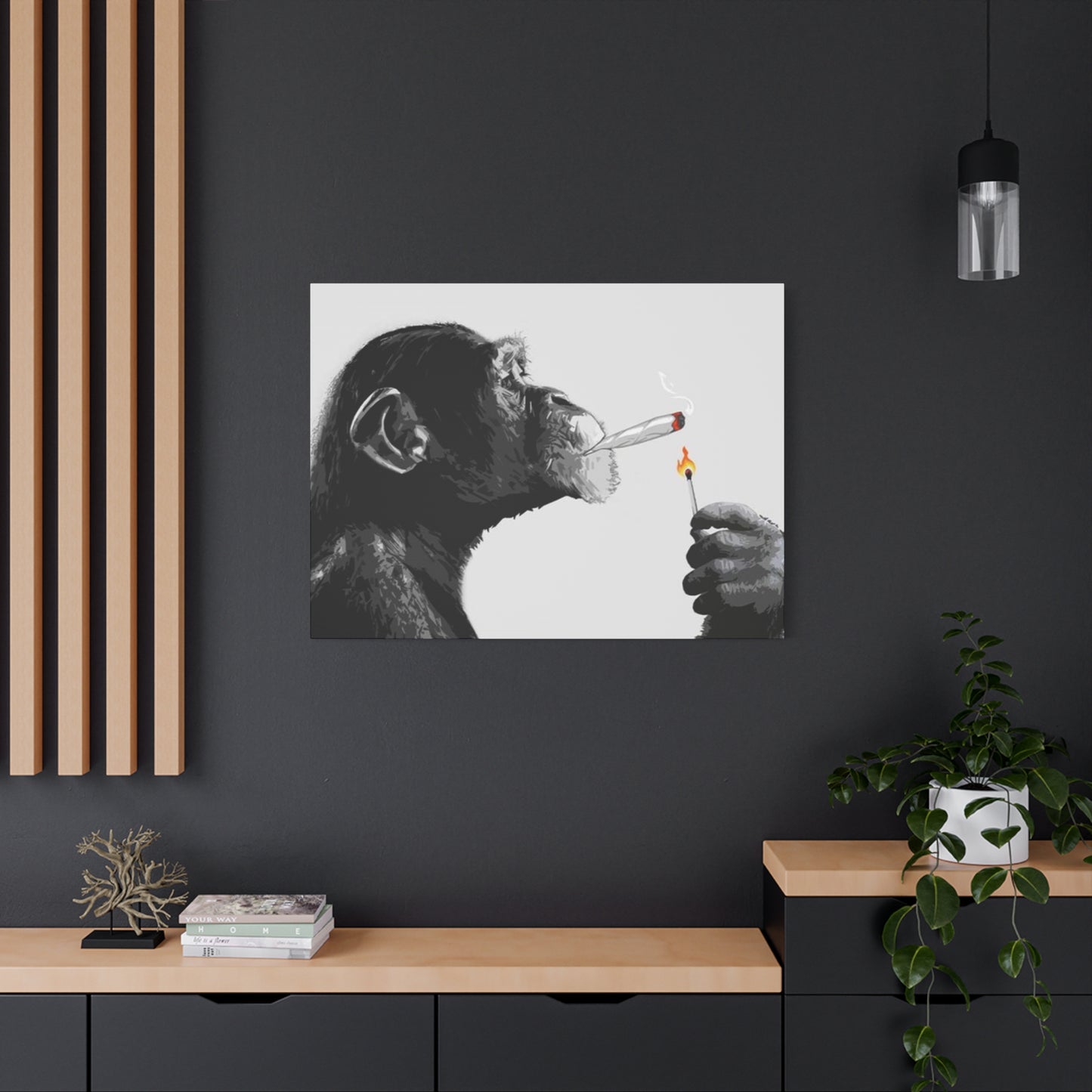Edgy and Expressive: The Bold Appeal of Smoking Wall Art
Contemporary home decoration has evolved beyond traditional boundaries, embracing unconventional artistic expressions that challenge conventional aesthetics. Among these revolutionary trends, smoke-themed artwork has emerged as a powerful visual medium that transforms living environments into sophisticated galleries of atmospheric beauty. This artistic movement captures the ephemeral nature of smoke through various mediums, creating dramatic focal points that speak to the modern homeowner's desire for unique, conversation-starting pieces.
The fascination with smoke as an artistic subject stems from its inherently mysterious and ever-changing qualities. Unlike static subjects, smoke represents movement, transformation, and the passage of time itself. Artists who specialize in this medium understand that they are not merely depicting wisps of vapor, but rather capturing moments of pure energy and emotion frozen in time.
Modern homeowners increasingly seek artwork that reflects their personality while adding sophistication to their living environments. Smoke-themed pieces offer this perfect balance, providing both visual intrigue and emotional depth. These artworks serve as windows into contemplative moments, inviting viewers to pause and reflect on the beauty found in seemingly simple elements.
Smoke & Style on Canvas
Canvas artwork featuring smoke motifs represents one of the most versatile approaches to incorporating atmospheric imagery into home decoration. These pieces range from hyperrealistic depictions that seem to leap off the wall to abstract interpretations that suggest rather than explicitly show smoky forms. The canvas medium allows artists to explore various techniques, from traditional oil paintings that capture every subtle gradation of smoke to contemporary mixed-media approaches that incorporate texture and dimension.
Professional artists working in this medium often employ specialized techniques to achieve the ethereal quality that makes smoke so captivating. Layer upon layer of carefully applied paint creates depth and movement, while strategic use of light and shadow gives the impression that the smoke might dissipate at any moment. The most successful pieces in this category manage to balance realism with artistic interpretation, creating works that are both technically impressive and emotionally resonant.
The appeal of smoke on canvas lies in its ability to transform any room into a more sophisticated environment. A well-executed smoke painting can serve as the centerpiece of a living room, drawing the eye and creating a focal point around which other decorative elements can be arranged. The neutral tones typically associated with smoke artwork make these pieces surprisingly versatile, complementing both contemporary minimalist aesthetics and more traditional decorative schemes.
Collectors of smoke-themed canvas art often describe their pieces as having an almost meditative quality. The flowing, organic forms invite contemplation and can create a sense of calm in busy living environments. This psychological impact makes smoke artwork particularly valuable for creating relaxation-focused areas such as bedrooms, studies, or meditation rooms.
Artists specializing in smoke on canvas often draw inspiration from personal experiences, philosophical concepts, or simply the pure visual appeal of smoke's natural patterns. Some focus on the scientific aspects of smoke behavior, studying fluid dynamics to create more accurate representations, while others take a more intuitive approach, allowing their emotional response to guide their artistic choices.
Edgy Art with a Smoky Twist
Contemporary art lovers increasingly gravitate toward pieces that challenge traditional expectations while maintaining aesthetic appeal. Smoky artwork with an edgy twist accomplishes this balance by combining the inherent mystique of smoke with bold artistic statements that refuse to be ignored. These pieces often incorporate unexpected elements, unconventional color schemes, or provocative themes that elevate them beyond mere decoration into the realm of serious artistic expression.
Edge in smoky art can manifest in numerous ways. Some artists achieve it through dramatic contrasts, juxtaposing delicate smoke patterns against harsh geometric backgrounds or industrial elements. Others find their edge through color manipulation, transforming traditional gray and white smoke into vibrant purples, electric blues, or fiery oranges that demand attention and spark conversation.
The psychological impact of edgy smoke art cannot be understated. These pieces often evoke strong emotional responses, whether through their bold visual presence or their underlying themes. They speak to viewers who appreciate art that makes statements rather than simply filling wall areas. This category of artwork particularly appeals to younger homeowners who want their living environments to reflect their dynamic, unconventional approach to life.
Many artists working in this edgy realm draw inspiration from urban environments, street art traditions, or contemporary social commentary. They see smoke as a metaphor for transformation, rebellion, or the ephemeral nature of modern life. These deeper meanings add layers of significance to pieces that might initially appear to be purely aesthetic choices.
The versatility of edgy smoky art allows it to work effectively in various home environments. In modern lofts or converted industrial buildings, these pieces complement the raw, urban aesthetic while adding sophistication. In more traditional homes, they serve as striking accent pieces that prevent decorative schemes from becoming too predictable or conservative.
Collectors often find that edgy smoky artwork evolves in meaning over time. A piece that initially attracted attention for its bold visual impact may reveal subtler qualities through continued viewing. This depth and complexity make these artworks valuable long-term investments for serious art enthusiasts.
Bold Smoke, Bold Statements
Artwork that combines smoke imagery with bold artistic statements represents a significant trend in contemporary home decoration. These pieces refuse to fade into the background, instead demanding attention through their confident use of scale, color, or conceptual content. Bold smoky art transforms living environments by creating dramatic focal points that anchor entire decorative schemes while expressing the homeowner's commitment to sophisticated, unconventional aesthetics.
The boldness in smoke-themed artwork often emerges from the artist's treatment of scale and proportion. Oversized pieces that dominate entire walls create immersive experiences, making viewers feel as though they are surrounded by swirling, atmospheric energy. These large-format works particularly excel in open-plan living areas where their presence can be appreciated from multiple vantage points.
Color manipulation represents another avenue through which artists achieve boldness in smoke-themed work. While traditional smoke imagery relies on monochromatic palettes, contemporary artists frequently push boundaries by introducing unexpected hues that transform familiar forms into extraordinary visual experiences. Brilliant reds might suggest fire-born smoke, while cool blues evoke mysterious evening atmospheres.
Conceptual boldness in smoke artwork often involves layering multiple meanings within single pieces. Artists might use smoke as a metaphor for social commentary, environmental concerns, or philosophical reflections on impermanence and change. These deeper meanings add intellectual weight to pieces that already command attention through their visual impact.
The psychological effect of bold smoke artwork on living environments cannot be ignored. These pieces establish immediate atmosphere, creating rooms that feel dynamic, sophisticated, and personally meaningful. They appeal particularly to homeowners who view their living environments as extensions of their personality and artistic sensibilities.
Bold smoky art also demonstrates remarkable versatility in terms of decorative integration. Despite their commanding presence, well-designed pieces in this category can complement rather than overwhelm other decorative elements. The key lies in understanding how the artwork's energy interacts with furniture, lighting, and architectural features to create cohesive yet dynamic environments.
Smoke Clouds in Motion
The representation of smoke clouds in artistic motion captures one of nature's most fleeting and beautiful phenomena. Artists who specialize in depicting smoke in movement face unique challenges, as they must convey the essence of constant change through static media. The most successful pieces in this category manage to suggest the flow and evolution of smoke while creating visually compelling compositions that enhance home environments.
Motion in smoke artwork can be suggested through various artistic techniques. Flowing brushstrokes that follow the natural patterns of air currents create a sense of movement even in still paintings. Strategic blurring, gradient transitions, and careful attention to the physics of smoke behavior all contribute to the illusion that the depicted smoke might shift and change at any moment.
Digital artists working with smoke motion have access to unique tools that allow them to capture and manipulate actual smoke movements. High-speed photography can freeze moments of smoke evolution, revealing intricate patterns and structures that would be impossible to perceive with the naked eye. These documented moments then serve as foundations for artistic interpretation and enhancement.
The appeal of smoke clouds in motion lies partly in their ability to bring energy to static living environments. Rooms decorated with these dynamic pieces feel more alive and engaging, as the suggested movement creates visual interest that evolves throughout the day as lighting conditions change. This quality makes motion-based smoke art particularly valuable for homeowners who want their environments to feel dynamic rather than static.
Artists often draw inspiration for smoke motion pieces from scientific studies of fluid dynamics, meteorology, or simply careful observation of smoke behavior in various conditions. Understanding how smoke responds to air currents, temperature differentials, and obstacles allows artists to create more convincing and emotionally resonant depictions.
The meditative qualities of smoke clouds in motion cannot be overlooked. Viewers often find themselves drawn into the suggested flow and movement, creating moments of contemplation and relaxation. This psychological effect makes these pieces particularly valuable for creating peaceful environments within busy modern lifestyles.
The Art of Smoke and Shadows
Shadow play represents a crucial element in sophisticated smoke artwork, as the interplay between light and darkness creates depth, mystery, and visual drama that elevates these pieces beyond simple representation. Artists who master the relationship between smoke and shadows produce works that seem to breathe with life, creating atmospheric environments that transform home aesthetics through their subtle yet powerful presence.
The technical challenges of depicting smoke and shadows require deep understanding of light behavior, atmospheric perspective, and the physical properties of smoke itself. Successful artists in this genre study how light passes through, reflects off, and is absorbed by smoke particles, creating the complex visual relationships that make their work so compelling. These technical foundations support artistic interpretations that can range from hyperrealistic to completely abstract.
Shadow work in smoke art often involves careful consideration of implied light sources and their effects on both the smoke and surrounding environments. A single candle might create warm, intimate shadows that suggest cozy evening atmospheres, while harsh directional lighting could produce dramatic contrasts that speak to more intense emotional states. These lighting choices significantly impact the psychological effect of the finished artwork.
The interplay between smoke and shadows creates opportunities for symbolic and metaphorical artistic expression. Shadows might represent the unknown, hidden aspects of experience, or the passage of time, while smoke could symbolize transformation, memory, or the ephemeral nature of existence. These layered meanings add intellectual depth to pieces that already provide strong visual impact.
Home decorators appreciate smoke and shadow artwork for its ability to create sophisticated, contemplative atmospheres. These pieces work particularly well in evening lighting conditions, when artificial illumination can echo and enhance the lighting effects depicted in the artwork itself. This quality makes them excellent choices for dining rooms, lounges, or other areas designed for relaxation and social interaction.
Collectors often find that smoke and shadow pieces reveal new details and relationships through continued viewing. The complex visual relationships within these works mean that different lighting conditions, viewing angles, and times of day can highlight previously unnoticed elements, keeping the artwork fresh and engaging over time.
Mystery Wrapped in Smoke
The mysterious qualities inherent in smoke make it an ideal subject for artwork that seeks to create atmospheric intrigue and emotional depth within home environments. Artists working with mystery-themed smoke imagery tap into fundamental human fascinations with the unknown, the hidden, and the partially revealed. These pieces invite contemplation and imagination while providing sophisticated visual anchor points for contemporary home decoration.
Mystery in smoke artwork often emerges from what is concealed rather than what is revealed. Partially obscured forms, suggested rather than explicit imagery, and ambiguous compositions allow viewers to bring their own interpretations and emotional responses to the work. This interactive quality makes mystery-themed smoke art particularly engaging for homeowners who appreciate pieces that evolve in meaning through continued viewing.
The psychological impact of mysterious smoke artwork reflects deep-seated human responses to the unknown. These pieces can create feelings of intrigue, contemplation, or peaceful mystery that transform living environments into more emotionally complex and intellectually stimulating environments. The effect is particularly pronounced in intimate settings where viewers have time and opportunity for prolonged engagement with the artwork.
Artists specializing in mysterious smoke imagery often employ techniques that enhance the sense of the unknown. Soft focus, graduated lighting, and strategic use of negative areas create compositions that seem to hold secrets just beyond the viewer's ability to fully grasp. These technical approaches support conceptual frameworks that explore themes of memory, dreams, and the subconscious mind.
The decorative versatility of mysterious smoke artwork allows it to function effectively in various home environments. In bedrooms, these pieces can create dreamy, contemplative atmospheres conducive to rest and reflection. In studies or libraries, they provide intellectual stimulation while maintaining the calm necessary for concentration and thought.
Contemporary homeowners increasingly seek artwork that offers more than mere aesthetic appeal, and mystery-wrapped smoke pieces deliver this depth through their ability to engage viewers on multiple levels simultaneously. The initial visual impact draws attention, while deeper engagement reveals layers of meaning and interpretation that keep these pieces relevant and interesting over time.
Smoke Rings and Abstract Lines
The geometric possibilities within smoke imagery provide contemporary artists with rich opportunities for creating pieces that bridge the gap between representational and abstract art. Smoke rings and abstract linear elements derived from smoke patterns offer homeowners sophisticated artwork that functions both as atmospheric representation and pure visual composition. These pieces particularly appeal to decorators seeking artwork that complements modern, minimalist aesthetic approaches.
Smoke rings possess inherent geometric perfection that artists can enhance, manipulate, or fragment to create compelling visual compositions. The circular forms provide stable focal points within otherwise fluid compositions, creating balance and structure that prevents purely atmospheric pieces from becoming visually chaotic. This geometric foundation allows artists to explore more adventurous abstract elements while maintaining visual coherence.
Abstract lines derived from smoke movement offer endless compositional possibilities. These linear elements can suggest energy, direction, and emotion while maintaining connection to their atmospheric origins. Artists working with abstract smoke lines often develop personal vocabularies of marks and gestures that allow them to convey specific moods or concepts through their linear choices.
The appeal of smoke rings and abstract lines lies partly in their intellectual accessibility. Viewers can appreciate these pieces on purely formal levels, responding to their compositional strengths, color relationships, and visual rhythms without necessarily engaging with complex conceptual frameworks. This accessibility makes them excellent choices for homeowners who want sophisticated artwork without requiring extensive art historical knowledge.
Modern home environments benefit significantly from the inclusion of abstract smoke-based artwork. These pieces provide visual interest and sophisticated atmosphere while maintaining enough restraint to complement rather than dominate other decorative elements. Their neutral subject matter and often monochromatic palettes allow them to function effectively as background elements that unify diverse decorative schemes.
The meditative qualities of smoke rings and abstract lines create opportunities for contemplative engagement that busy modern lifestyles often lack. These pieces invite quiet observation and can serve as focal points for moments of reflection and mental clarity within hectic daily routines.
Atmospheric Smoking Wall Decor
Wall decoration featuring atmospheric smoking imagery represents a sophisticated approach to creating immersive home environments that transport viewers beyond the physical boundaries of their living areas. These pieces work by establishing powerful atmospheric conditions that influence the perceived character and emotional tone of entire rooms. Successful atmospheric smoking decor achieves this transformation through careful attention to scale, placement, and integration with existing environmental elements.
Atmospheric effects in smoking wall decor often depend on the artist's ability to suggest air quality, lighting conditions, and environmental mood through visual techniques. Soft gradations, careful color temperature control, and strategic use of contrast create the impression that the depicted atmosphere extends beyond the artwork's physical boundaries into the surrounding room. This environmental integration makes atmospheric pieces particularly valuable for homeowners seeking cohesive, immersive decorative schemes.
The scale considerations for atmospheric smoking wall decor differ significantly from those governing smaller, more focused artworks. Large-format pieces that occupy substantial wall areas can create truly immersive experiences, while carefully arranged groupings of smaller works can build atmospheric effects through accumulation and relationship. The key lies in understanding how the artwork's atmospheric qualities interact with the room's actual lighting, architecture, and function.
Lighting plays a crucial role in the success of atmospheric smoking wall decor. Artificial lighting that complements or enhances the mood suggested by the artwork can create seamless integration between the depicted atmosphere and the actual room environment. This synergy transforms living areas into cohesive, emotionally resonant environments that feel intentionally designed rather than simply decorated.
The psychological effects of atmospheric smoking decor extend beyond mere visual appreciation to influence occupants' emotional states and behavioral patterns. Rooms decorated with carefully chosen atmospheric pieces can feel more relaxing, inspiring, or contemplative, depending on the specific artistic choices involved. This emotional impact makes atmospheric decor particularly valuable for creating purposeful environments within multi-functional modern homes.
Contemporary homeowners increasingly understand that effective decoration involves creating environments rather than simply arranging objects. Atmospheric smoking wall decor supports this holistic approach by providing artwork that contributes to overall environmental character rather than functioning as isolated decorative elements.
Dark & Dreamy Smoke Art
The combination of dark atmospheric elements with dreamy, ethereal qualities creates smoke artwork that appeals to homeowners seeking sophisticated, emotionally complex decorative pieces. Dark and dreamy smoke art operates in the realm between conscious and subconscious experience, creating pieces that invite contemplation while providing strong visual anchor points for contemporary home environments. These works often incorporate elements of mystery, romance, and psychological depth that distinguish them from more straightforward atmospheric pieces.
Darkness in smoke artwork serves multiple artistic and psychological functions. It can suggest mystery, sophistication, or emotional intensity while providing visual weight that anchors compositions and creates dramatic focal points. Artists working with dark smoke themes often employ rich, saturated colors and strong contrast relationships that give their pieces commanding presence within home environments.
The dreamy qualities in smoke art typically emerge from soft focus techniques, ethereal color palettes, or compositional approaches that suggest rather than explicitly define forms and relationships. These dreamy elements counterbalance darker themes, creating pieces that feel emotionally complex rather than simply brooding or heavy. This balance makes dark and dreamy pieces suitable for intimate residential environments where occupants want sophistication without oppression.
Psychological research suggests that artwork combining dark and light elements can create more emotionally satisfying viewing experiences than pieces that rely on single emotional tones. Dark and dreamy smoke art leverages this principle by providing both the visual weight necessary for strong decorative impact and the ethereal qualities that prevent these pieces from overwhelming intimate living environments.
The decorative applications for dark and dreamy smoke art are particularly diverse. Bedroom environments benefit from these pieces' ability to create intimate, contemplative atmospheres conducive to rest and reflection. Living areas gain sophistication and emotional depth that elevate everyday activities into more meaningful experiences.
Artists specializing in dark and dreamy smoke imagery often draw inspiration from literature, film, or personal emotional experiences that combine intensity with beauty. These deeper sources of inspiration add layers of meaning that reward continued viewing and contemplation, making these pieces valuable long-term additions to serious art collections.
Smoky Vibes for Your Walls
Creating the right atmospheric mood through wall decoration requires careful attention to how artistic choices influence the psychological and emotional character of living environments. Smoky vibes in wall art achieve this atmospheric control through sophisticated manipulation of visual elements that suggest specific moods, energy levels, and emotional states. These pieces function as environmental mood enhancers that can transform ordinary rooms into distinctive, personally meaningful environments.
The concept of "vibes" in contemporary culture refers to the subtle emotional and psychological qualities that environments communicate to their occupants. Smoky artwork contributes to room vibes through its inherent associations with contemplation, mystery, transformation, and atmospheric depth. These associations operate below the level of conscious thought, influencing how people feel and behave within decorated environments.
Color psychology plays a crucial role in how smoky wall art creates specific vibes. Cool gray tones might suggest calm, contemplative moods, while warmer smoke colors can create more intimate, cozy atmospheres. Artists who understand these psychological relationships can craft pieces that support specific lifestyle goals or emotional needs within home environments.
Texture considerations also contribute significantly to the vibes created by smoky wall art. Smooth, flowing textures might suggest serenity and ease, while more agitated or complex textural treatments can create energy and visual excitement. The choice of artistic medium - from smooth digital prints to heavily textured paintings - influences how pieces interact with room lighting and other decorative elements.
The social psychology of smoky vibes makes these pieces particularly valuable for homeowners who entertain regularly or want their homes to feel welcoming to guests. Smoky artwork can create sophisticated, conversation-friendly atmospheres that help people feel comfortable while maintaining visual interest that prevents social environments from becoming boring or generic.
Modern lifestyle considerations increasingly emphasize the importance of home environments that support mental health, creativity, and personal well-being. Smoky vibes in wall art contribute to these goals by creating atmospheric conditions that encourage relaxation, contemplation, and emotional balance within busy contemporary lifestyles.
Chasing Smoke in Art
The artistic pursuit of capturing smoke's ephemeral qualities represents one of the most challenging and rewarding directions in contemporary atmospheric artwork. Artists who chase smoke as a subject must master both technical skills and conceptual approaches that allow them to freeze moments of constant change while maintaining the essential energy that makes smoke so visually compelling. This artistic challenge produces pieces that combine technical excellence with deep emotional resonance.
The technical challenges of chasing smoke in art begin with understanding the physical properties that make smoke behave as it does. Temperature differentials, air currents, particle density, and gravitational effects all influence how smoke moves and appears. Artists who study these scientific foundations can create more convincing and emotionally powerful depictions that capture the essential truth of smoke's behavior.
Photography plays an increasingly important role in contemporary smoke art, as high-speed cameras can capture moments of smoke evolution that would be impossible to perceive through direct observation. These photographic studies serve as references for traditional artistic media while also functioning as artworks in their own right. The relationship between photographic documentation and artistic interpretation creates rich opportunities for contemporary expression.
Conceptual approaches to chasing smoke often involve philosophical reflections on time, change, and impermanence. Artists might use smoke as a metaphor for memory, emotion, or the passage of life itself. These deeper meanings transform what could be simple representation into sophisticated artistic statements that reward intellectual engagement while providing strong visual appeal.
The emotional satisfaction that comes from successfully chasing smoke in art relates to fundamental human desires to understand and capture fleeting beauty. Viewers respond to these pieces partly because they represent successful attempts to preserve what normally cannot be held or controlled. This psychological dynamic makes smoke-chasing artwork particularly meaningful for homeowners seeking pieces that connect with deeper human experiences.
Contemporary technology provides new tools for artists chasing smoke, from digital manipulation software that can enhance and modify photographic captures to virtual reality systems that allow immersive smoke experiences. These technological advances expand artistic possibilities while maintaining connection to the fundamental challenge of capturing ephemeral beauty.
The Beauty of Burning Embers
Ember imagery in contemporary art captures the moment when matter transforms from solid to atmospheric, creating visual metaphors for transformation, energy, and the cycle of creation and destruction. Artists who focus on burning embers produce pieces that combine the visual appeal of fire and smoke with deeper symbolic content that resonates with viewers seeking artwork that addresses fundamental life experiences. These pieces bring warmth, energy, and sophisticated symbolic content to home environments.
The visual appeal of burning embers lies in their combination of intense color, dramatic lighting effects, and suggestion of transformation in progress. The glowing oranges and reds of ember cores contrast beautifully with the softer grays and whites of emerging smoke, creating natural color palettes that work effectively with a wide range of home decorative schemes. This natural color harmony makes ember-themed artwork particularly valuable for homeowners seeking pieces that integrate seamlessly with existing decor.
Symbolic interpretations of ember imagery often focus on themes of transformation, renewal, and the relationship between destruction and creation. Many cultures associate embers with purification, spiritual transformation, or the persistence of life force through challenging circumstances. Artists who understand these symbolic dimensions can create pieces that function as both aesthetic objects and meaningful personal talismans.
The emotional impact of ember artwork often relates to fundamental human relationships with fire as a source of comfort, protection, and gathering. These deep psychological associations make ember-themed pieces particularly effective at creating warm, welcoming atmospheres that encourage social interaction and emotional connection. Living areas decorated with ember imagery often feel more inviting and emotionally supportive.
Technical considerations for depicting burning embers require understanding of light behavior, color temperature, and the physics of combustion. Artists must balance the intense luminosity of glowing embers with the subtler gradations of surrounding smoke and atmosphere. This technical challenge rewards mastery with pieces that seem to radiate actual warmth and energy.
Contemporary applications of ember imagery often extend beyond traditional fire associations to explore themes related to passion, creativity, and personal transformation. These broader interpretations make ember artwork relevant to modern viewers seeking pieces that reflect contemporary concerns while maintaining connection to timeless human experiences.
Raw, Gritty Smoke Art
Contemporary art that emphasizes raw, unrefined qualities in smoke imagery appeals to viewers seeking authentic, emotionally direct artistic experiences. Raw and gritty smoke art deliberately avoids prettification or romanticization, instead presenting smoke in ways that emphasize its connection to industrial processes, urban environments, or intense emotional states. These pieces provide sophisticated alternatives to more decorative approaches while maintaining strong visual impact.
The aesthetic of rawness in smoke art often involves embracing imperfection, spontaneity, and emotional directness over refined technical execution. Artists working in this mode might employ rough brushwork, unconventional materials, or deliberately unfinished surfaces that suggest authentic emotional expression rather than polished artistic product. This approach appeals to viewers who value authenticity and emotional honesty in artistic expression.
Gritty qualities in smoke artwork can be achieved through various technical and conceptual approaches. Urban themes, industrial imagery, or references to working-class experiences can provide conceptual grittiness, while rough textures, muted color palettes, or aggressive mark-making contribute to visual grittiness. The combination creates pieces that feel connected to real-world experiences rather than idealized artistic concepts.
The psychological appeal of raw, gritty smoke art often relates to contemporary desires for authentic experience in an increasingly artificial world. These pieces can provide emotional anchors that feel genuine and uncompromising, offering viewers opportunities to connect with more direct, unmediated forms of artistic expression. This authenticity makes raw smoke art particularly valuable for homeowners seeking pieces that reflect their rejection of superficial decorative approaches.
Home environments benefit from raw, gritty smoke art through the introduction of emotional honesty and visual authenticity that can prevent decorative schemes from feeling too controlled or artificial. These pieces work particularly well in converted industrial locations, urban lofts, or other environments where their rough aesthetic complements architectural features and lifestyle choices.
The social and cultural commentary often embedded in raw, gritty smoke art adds intellectual depth that rewards continued engagement. Artists working in this mode frequently address themes related to environmental concerns, social justice, or economic inequality, making their work relevant to viewers seeking art that engages with contemporary issues.
Smoke as a Visual Storyteller
The narrative possibilities inherent in smoke imagery provide artists with rich opportunities for creating artwork that tells stories, conveys emotions, or explores complex themes through visual means. Smoke as a storytelling medium operates through suggestion, metaphor, and atmospheric creation rather than explicit narrative representation. This subtle approach to storytelling produces pieces that engage viewers' imagination while providing sophisticated decorative elements for contemporary homes.
Visual storytelling through smoke often relies on the medium's natural associations with transformation, memory, and the passage of time. Artists can suggest narratives about change, loss, renewal, or discovery by carefully controlling how smoke appears to move, dissipate, or interact with other visual elements. These suggested stories invite viewer participation, as individuals bring their own experiences and interpretations to the artistic framework provided.
The emotional resonance of smoke-based storytelling derives partly from the medium's ability to evoke specific moods and psychological states without relying on explicit imagery. A wisp of smoke might suggest melancholy reflection, while billowing clouds could imply drama or transformation. These emotional associations operate below conscious thought, creating powerful responses that enhance the storytelling impact.
Metaphorical approaches to smoke storytelling allow artists to address complex themes through accessible visual language. Smoke might represent memory fading, dreams dissolving, or new possibilities emerging from the ashes of old experiences. These metaphorical frameworks provide intellectual engagement while maintaining the visual appeal necessary for successful home decoration.
The temporal aspects of smoke make it particularly effective for stories about change, development, or the relationship between past and present. Artists can suggest the passage of time through smoke's various stages of development, from dense initial formation through gradual dissipation into transparency. This temporal quality makes smoke artwork particularly meaningful for viewers reflecting on personal history or life transitions.
Contemporary narrative approaches to smoke art often incorporate elements from literature, film, or personal memoir, creating pieces that function as visual equivalents to written or cinematic stories. These cross-media influences expand the storytelling possibilities while maintaining the unique qualities that make smoke such a compelling visual subject.
Wall Art with a Smoky Edge
Incorporating edgy elements into smoke-themed wall art creates pieces that challenge conventional decorative expectations while maintaining the sophisticated atmospheric qualities that make smoke imagery so appealing to contemporary homeowners. Smoky edge in wall art can manifest through bold compositional choices, unconventional color applications, or conceptual approaches that push beyond comfortable aesthetic boundaries.
The concept of "edge" in contemporary art typically refers to qualities that create tension, surprise, or intellectual challenge rather than simple comfort or decoration. Smoky wall art achieves edge through various strategies, from aggressive mark-making that suggests violent or passionate emotional states to color choices that challenge viewers' expectations about how smoke should appear. These edgy qualities prevent pieces from functioning as mere background decoration.
Urban influences often contribute to the edgy quality in smoky wall art, as artists draw inspiration from street art traditions, industrial environments, or metropolitan lifestyle experiences. These influences can introduce elements of social commentary, cultural critique, or alternative aesthetic values that distinguish edgy pieces from more conventional atmospheric artwork.
The psychological impact of edgy smoky wall art creates environments that feel dynamic, intellectually stimulating, and personally meaningful rather than simply attractive. These pieces demand engagement rather than passive appreciation, making them particularly valuable for homeowners who want their living environments to reflect their active, questioning approach to life and culture.
Decorative integration of edgy smoky wall art requires careful consideration of how these challenging pieces interact with other environmental elements. While their edge makes them attention-grabbing focal points, successful integration ensures that they enhance rather than dominate their surroundings. This balance allows homeowners to benefit from their pieces' intellectual and emotional impact without creating overwhelming or uncomfortable environments.
Contemporary lifestyle considerations increasingly value authenticity, personal expression, and intellectual engagement over conventional prettiness or social conformity. Edgy smoky wall art serves these values by providing sophisticated artwork that reflects viewers' complex, multifaceted approach to contemporary living.
The Dance of Smoke and Light
The interplay between smoke and illumination creates some of the most visually compelling and emotionally resonant artwork in contemporary atmospheric art. Artists who master the relationship between smoke and light produce pieces that seem to breathe with life, creating dynamic visual experiences that transform home environments through their suggestion of movement, energy, and atmospheric depth. This artistic focus requires technical excellence combined with deep understanding of light behavior and atmospheric effects.
Light's interaction with smoke particles creates optical phenomena that range from simple illumination to complex scattering effects that produce halos, color shifts, and apparent texture changes within smoke formations. Artists who understand these physical relationships can create more convincing and emotionally powerful depictions that capture the essential magic of smoke and light interaction.
The emotional impact of smoke and light artwork often relates to fundamental human associations with illumination as revelation, understanding, or spiritual experience. Light breaking through smoke can suggest hope emerging from darkness, truth becoming clear through confusion, or beauty found within challenging circumstances. These symbolic interpretations add layers of meaning that reward contemplation and personal reflection.
Technical approaches to depicting smoke and light interaction require mastery of color theory, atmospheric perspective, and the physics of light transmission and scattering. Artists must understand how different light sources - from candles to electric illumination to natural sunlight - create different effects when interacting with smoke particles. This technical foundation supports artistic interpretations that feel authentic and emotionally convincing.
The decorative applications of smoke and light artwork are particularly diverse, as these pieces can complement various lighting conditions within home environments. Rooms with dramatic lighting benefit from artwork that echoes and enhances these conditions, while more subtle lighting can be enriched by pieces that suggest atmospheric complexity and depth.
Contemporary interest in mindfulness, meditation, and contemplative practices makes smoke and light artwork particularly relevant to modern lifestyle goals. These pieces can create focal points for quiet reflection while providing the visual complexity necessary to maintain interest through repeated viewing.
Cigarettes and Canvas
Artistic exploration of smoking culture through canvas-based artwork addresses complex social, personal, and aesthetic themes while creating visually compelling pieces for contemporary home decoration. Artists working with cigarette imagery must navigate cultural sensitivities while extracting the visual and conceptual richness that smoking-related subjects can provide. These pieces often function as cultural commentary while maintaining strong aesthetic appeal.
The visual elements associated with cigarettes - from the linear forms of the cigarettes themselves to the atmospheric effects they produce - provide rich compositional possibilities for canvas artists. The geometric simplicity of cigarette forms can serve as structural elements within complex atmospheric compositions, while the smoke they generate offers opportunities for exploring movement, texture, and atmospheric depth.
Cultural and historical perspectives on smoking provide conceptual frameworks for artists exploring cigarette imagery. These pieces might address themes related to rebellion, sophistication, addiction, mortality, or social change. The complexity of contemporary attitudes toward smoking creates opportunities for nuanced artistic exploration that goes beyond simple pro or anti-smoking positions.
The aesthetic appeal of cigarette-related canvas art often lies in its ability to combine familiar objects with extraordinary atmospheric effects. Artists can transform commonplace smoking scenarios into sophisticated artistic statements through careful attention to lighting, composition, and atmospheric development. This transformation elevates everyday experiences into the realm of serious artistic consideration.
Personal and social commentary opportunities in cigarette-themed artwork allow artists to address contemporary issues while maintaining visual appeal necessary for home decoration. These pieces might explore themes related to personal choice, social pressure, health consciousness, or cultural identity, making them relevant to viewers seeking art that engages with meaningful contemporary concerns.
The decorative integration of cigarette-themed canvas art requires sensitivity to household compositions and personal values, as these pieces might not be appropriate for all home environments. However, when thoughtfully chosen and placed, they can provide sophisticated focal points that demonstrate the homeowner's appreciation for complex, culturally engaged artistic expression.
Smoky Silhouettes on Display
Silhouette techniques applied to smoke imagery create dramatically simplified yet emotionally powerful artwork that functions effectively as both sophisticated home decoration and meaningful artistic expression. Smoky silhouettes reduce complex atmospheric phenomena to essential forms and relationships, creating pieces that are immediately readable while maintaining the mysterious and contemplative qualities that make smoke such an appealing artistic subject.
The technical approach to creating smoky silhouettes involves identifying and emphasizing the most essential visual elements within smoke formations while eliminating secondary details that might complicate or confuse the final composition. This reductive process requires deep understanding of smoke's fundamental characteristics and the ability to distinguish between essential and incidental visual information.
Dramatic impact in smoky silhouette work often comes from strong contrast relationships between dark silhouetted forms and lighter atmospheric backgrounds, or vice versa. These high-contrast approaches create pieces with immediate visual impact that can function as powerful focal points within home environments. The simplified forms also make these pieces particularly effective at distance or in environments with challenging lighting conditions.
The emotional appeal of smoky silhouettes often relates to their ability to suggest rather than explicitly state atmospheric conditions and emotional relationships. Viewers can project their own interpretations and emotional responses onto these simplified forms, creating personal connections that make the artwork more meaningful and emotionally satisfying over time.
Decorative versatility makes smoky silhouette artwork particularly valuable for homeowners seeking pieces that can function effectively with various decorative schemes and lighting conditions. The simplified forms and high contrast relationships in silhouette work tend to complement rather than compete with other decorative elements, making these pieces excellent choices for complex or evolving decorative environments.
Contemporary interest in minimalism and essential design makes smoky silhouette artwork particularly relevant to current aesthetic trends. These pieces provide the atmospheric richness and emotional depth that many homeowners seek while maintaining the visual restraint that contemporary lifestyles often require.
Conclusion
Edgy and Expressive: The Bold Appeal of Smoking Wall Art lies in its ability to provoke thought, evoke mood, and add a daring visual element to any space. Often rich with attitude and emotion, smoking-themed artwork challenges conventions and offers a striking contrast to traditional home décor. Whether it’s a moody black-and-white portrait with a drifting trail of smoke or a colorful pop-art depiction of a rebellious icon, smoking wall art commands attention and stirs curiosity.
This genre of wall décor appeals to those who appreciate bold expression and aren't afraid to infuse their interiors with personality. It carries an urban, gritty aesthetic that pairs well with industrial, modern, or eclectic spaces—bringing with it an air of mystery, coolness, and sophistication. Smoking imagery often captures more than just a figure with a cigarette; it reflects deeper narratives of rebellion, introspection, glamour, or cultural critique.
For some, these pieces evoke nostalgia or cinematic elegance—calling to mind classic film noir scenes or vintage fashion photography. For others, they’re symbolic of freedom, attitude, or the complexities of human behavior. No matter the interpretation, smoking wall art creates a statement—one that speaks volumes without needing to explain itself.
Ultimately, smoking wall art is not for the faint of heart—it’s for those who appreciate edge, emotion, and the raw beauty of the imperfect. It’s a bold choice for curating a space that’s not just stylish, but also expressive and thought-provoking. In the right setting, this kind of art can transform a room from ordinary to unforgettable, leaving a lasting impression.

















